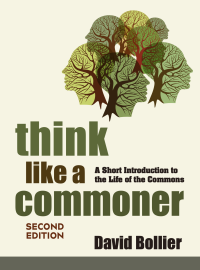It is now common for sports arenas and public schools to rent themselves out as marketing venues. Increasingly museums are doing the same. In today’s New York Times (registration required), Michael Kimmelman describes how art museums are choosing to become crypto-marketers, betraying their public trust as independent, artistically authoritative institutions. Some of the biggest names in the museum world are pioneering some dubious precedents by selling their prestige to corporate sponsors and influential collectors.
A few years ago, for example, the Brooklyn Museum hosted the Sensation exhibit, a show that amounted to free advertising – and enhanced resale value – for the art collection owned by Charles Saatchi. (Saatchi, an advertising mogul, clearly understands the “win-win” value of “donations” that double as marketing.) In a another, grander instance of this tactic, the financial services firm UBS gave the Museum of Modern Art its collection of art – and the museum then authorized the company “to plaster the city with advertisements that made MoMA seem like its tool and minor subsidiary,” writes Kimmelman.
The Guggenheim Museum once mounted an egregious vanity exhibit for Armani, the clothing designer. Just this week, the Metropolitan Museum opened a splashy, barely curated exhibit praising the genius of designer Coco Chanel – sponsored by (who else?) Chanel.
The museum-going public needs to start challenging these deals. One reason that museums are tax-exempt, after all, is so they can serve the public in ways that the market cannot. If museums are going to get into advertising, fine – but then let them be upfront about their role as commercial players, take the tax hit, and top pretending to be independent arbiters of art who are above the dirty fray of the market.
The more insidious issue is the subtle way that sponsorships erode a museum’s public credibility. Kimmelman points out that the Chanel exhibit does not mention Coco Chanel’s attempts to oust her Jewish partners from her perfume business during World War II, or her affair with a German SS officer in Paris. The National Gallery once exhibited the art collection of Swiss industrialist Emil Buhrle, giving his heirs the freedom to prepare an exhibit catalog that omitted the fact that part of his fortune came from arms-dealing with the Nazis.
Kimmelman puts his finger on the problem:
“Museums deal in two kinds of currency, after all: the quality of their collections and public trust. Squander one, and the other suffers. People visit MoMA or the Met to see great art; they will even consider art that they don’t know or don’t like as great because the museum says so. But this delicate cultural ecosystem depends on the public’s perception that museums make independent judgments – that they’re not just shilling for trustees or politicians or sponsors.”
In a letter to the Times, Harold Koda, the curator of the Costume Institute at the Met, protested that “it is unfair to judge an exhibition by an imagined collusion between sponsor and museum, especially when all parties have been so sensitive to such criticism.” That’s about as convincing as politicians claiming that campaign contributions from Enron don’t affect their judgment on energy policy. You can’t take the money and then claim to be independent.
It’s time for museums to show us where there real allegiance lies – to corporate marketers or to the public. Commercial galleries are at least candid about their desire to sell you something. But museums are slowly working themselves into a moral sinkhole by affecting a high-minded independence that is, in fact, a disguise for grubby marketing.











Recent comments